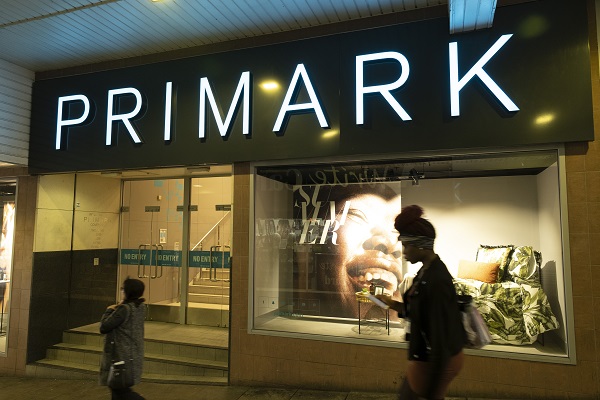Primark drives AB Foods share price to two-year high
Annual results from the budget fashion, groceries and sugar firm have been well received, and investors want a piece of the action. ii's head of markets explains why.
7th November 2023 08:39
by Richard Hunter from interactive investor

Associated British Foods (LSE:ABF) has delivered a reassuring result, underpinned by the diversity of its business model and another significant contribution from its flagship Primark business.
At the group level, revenues grew by 15% to £19.75 billion, marginally shy of estimates. However, adjusted operating profit of £1.51 billion represented an increase of 4% and was above expectations of £1.48 billion, leading to pre-tax profit of £1.34 billion, up by 25% on the previous year.
- Learn more: SIPP Portfolio Ideas | How SIPPs Work | Transfer a SIPP
Free cash flow also turned positive to £269 million from a previously negative £84 million, which in part had been due to inventory shortages given problems in the supply chain. This was achieved despite some significant investment across each of its business units of £1.2 billion, with net debt rising to £2.26 billion but within a comfortable range compared to earnings.
The improvement in fortunes across the board has also enabled improved shareholder returns. A further share buyback programme of £500 million has been announced, with the previous one having been recently completed. At the same time, a special dividend was announced in addition to an increase in the final dividend, taking the projected yield to a pedestrian but respectable 2.8%. Both measures are reflective of management confidence in prospects and are well covered given the strides the group has made.
The main engine of growth continues to be the Primark business, which continues to thrive. At the height of inflation volatility at the beginning of its financial year, the group made the decision only to pass on selective price increases to consumers, which had a negative impact on its own margin, which fell to 8.2% in the year compared to 9.8% previously.
However, the strategy clearly paid dividends as consumers continued to flock to its stores, given the return of full festive celebrations, new wardrobes in advance of summer holidays and despite some unseasonal summer and early autumn weather.
As a result, and in line with expectations, revenue grew by 15% to £9 billion for the year, although adjusted operating profit nudged slightly lower by 3% to £735 million given the group’s pricing decisions. Like-for-like sales also grew by 8.5%, with Primark now accounting for just under half of total group revenue.
- ii view: reason for optimism at AB Foods as Primark thrives
- Shares for the future: a record month and a new scoring system
- 10 lessons from the most successful everyday traders
At the same time, there was further investment in the business, particularly in digital, where further enhancements to its website and a controlled roll-out of a trial “Click and Collect” service are showing early signs of success.
In addition, 27 new stores were opened over the period to increase Primark’s presence, including eight new stores in the US, taking the estate in this potentially hugely rewarding market to 21, with a target of 60 stores by the end of 2026. In the meantime, net sales growth of 24% over the year represented a growing appreciation of US consumer tastes, leaving the region very much one to keep an eye on.
With inflationary pressures easing, such as in a reduction of material and freight costs, and with lessening volatility, the outlook for Primark remains upbeat, with the group expecting an adjusted operating profit margin in excess of 10% in the coming year and the potential for more should the current pace of growth be maintained.
The mix and diversity of the model is reflected in the share of revenues coming from each of the units. Primark represents 46% of sales, Grocery 21%, Sugar 13%, Ingredients 11% and Agriculture 9%. The second largest unit, Grocery, which houses the likes of Ovaltine and Twinings, also introduced some price increases to mitigate inflation, lifting revenues by 11% and adjusted operating profit by 8%, thus making a worthwhile contribution to the group effort.
- Can FTSE 100 repeat last year’s November rally?
- Shareholder power forces U-turn at UK's fourth-largest company
- Trading Strategies: the outlook for Rolls-Royce shares
The share price reaction to the numbers removes a previous tinge of disappointment on the slow recovery to profit margins, although the group has already estimated a return to pre-pandemic levels in the near future. It also adds to a significant share price performance, which has seen an increase of 48% over the last year, as compared to a marginal gain of 1.6% for the wider FTSE100.
The last piece of the jigsaw would be an upgrade to the current market consensus of the shares as a 'strong hold', which could potentially follow given clear growth prospects, easing inflation and an undemanding valuation by historic standards.
These articles are provided for information purposes only. Occasionally, an opinion about whether to buy or sell a specific investment may be provided by third parties. The content is not intended to be a personal recommendation to buy or sell any financial instrument or product, or to adopt any investment strategy as it is not provided based on an assessment of your investing knowledge and experience, your financial situation or your investment objectives. The value of your investments, and the income derived from them, may go down as well as up. You may not get back all the money that you invest. The investments referred to in this article may not be suitable for all investors, and if in doubt, an investor should seek advice from a qualified investment adviser.
Full performance can be found on the company or index summary page on the interactive investor website. Simply click on the company's or index name highlighted in the article.